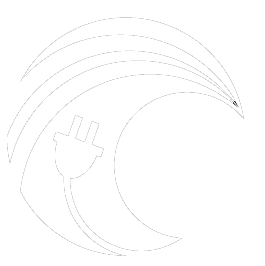28 January 2020
By Ali Trueworthy
Pressure, waves, positions, forces, velocities, accelerations! A lot of measurements go into operating a WEC. Depending on the type of device, the scale, and the stage of development, different measurements are necessary. WEC developers might find themselves needing multiple systems designed for complex applications just to collect the data they need to operate their wave energy converter. These systems are large in size and often very expensive. PMEC student Chris Dizon set out at the beginning of his Master’s program to shrink the size and cost of data collection on WECs and put all of the commonly used sensors for onto one, simple platform. He presented the platform, called the MiniDAQ (DAQ for Data Acquisition System), in his Master’s Thesis defense in August of 2019.
Chris is an electrical engineer excited about work with renewable energy. He arrived at Oregon State University hungry for a hands-on, hardware oriented project. That is exactly what he got! As a student in the energy systems group with Professor Ted Brekken, many of Chris’s lab mates work on power take-off for WECs- a topic we have covered before in this column (here). Most types of power take-off rely on data input to a controller to maximize power output. For instance, the controller might need to know about the incoming wave height or the instantaneous position and velocity of the floating body. Chris’s work will enable that data input, and thereby the autonomous ability of control systems, for the next generation of WECs.
Chris Dizon presenting a block diagram of the MiniDAQ
The MiniDAQ is meant to be a package system that can be used on any WEC. It includes the sensors, processing unit, and computer necessary to collect information throughout a WEC’s operation. The sensor requirements of the DAQ were provided by project partners at Sandia National Laboratory. Chris also collected feedback from WEC developers regarding which sensors they use or want to use on their devices to finalize the list of on-board sensors, which includes an analog to digital converter (ADC), a digital to analog converter (DAC), a load cell amplifier, a current loop receiver, an inertial measurement unit (IMU), and an absolute encoder. In presenting his work, Chris gave examples of what each of these sensors might be used for on a WEC. The ADC could be a resistant wave gauge used to measure wave heights, and the DAC allows the computer to talk to the outside world or to send commands such as the position of an actuator. The load cell amplifier can be used to know the stress on mooring lines, the current loop receiver could be a pressure sensor, the IMU can tell the position and velocity of the device, and the absolute encoder could tell the position of a part of the device relative to another, such as the position of the flap of a surging device.
The MiniDAQ weighs only 600g and costs less than $2,000 (compared to the ~$5,000 typical of these types of systems). It is an Arduino-based system and all but one of its sensors, the IMU, are off-the-shelf components, making the system easy to use and accessible to not only developers, but to other researchers as well. To highlight each component of the MiniDAQ during his thesis defense, Chris played a video of himself testing it, giving his audience a visual of the component, its output, and the hard work that went into creating and testing the MiniDAQ. Now that the work is complete, Chris hopes to see researchers and developers use the system. He will remain at Oregon State University working with Professor Ted Brekken and PMEC to pursue his Ph.D in electrical engineering.
All of the components of the MiniDAQ (credit: Chris Dizon)

